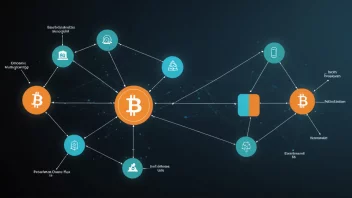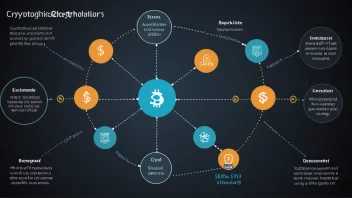The integration of blockchain technology in the renewable energy sector has sparked a significant debate, especially when compared to traditional energy trading methods. As the world moves towards sustainable energy solutions, understanding the advantages and disadvantages of these systems is critical for stakeholders in the industry. This article delves into a comparative analysis of blockchain technology and traditional energy trading, highlighting their respective pros, cons, and differences.
Overview of Traditional Energy Trading
Traditional energy trading involves the buying and selling of energy in centralized markets. Utilities and energy companies often control these markets, and transactions are facilitated through established protocols and regulatory frameworks. This system has been the backbone of energy distribution for decades.
Pros of Traditional Energy Trading
- Established Framework: Traditional trading methods are well-established, providing a reliable framework for transactions.
- Regulatory Compliance: Energy markets are heavily regulated, ensuring consumer protection and addressing market manipulation.
- Infrastructure: Existing infrastructure supports large-scale energy production and distribution.
Cons of Traditional Energy Trading
- Centralization: The centralized nature of traditional trading can lead to inefficiencies and lack of transparency.
- High Costs: Transaction costs can be significant due to the involvement of intermediaries.
- Limited Access: Smaller producers may find it challenging to participate in traditional energy markets.
Overview of Blockchain in Energy Trading
Blockchain technology offers a decentralized method of recording transactions across multiple computers. In the energy sector, it can facilitate peer-to-peer energy trading, allowing individuals to buy and sell energy directly with one another without the need for intermediaries.
Pros of Blockchain in Energy Trading
- Decentralization: Reduces the need for intermediaries, potentially lowering costs and increasing efficiency.
- Transparency: Every transaction is recorded on a public ledger, enhancing accountability and trust.
- Empowerment: Consumers can engage in peer-to-peer trading, promoting the use of renewable energy sources.
Cons of Blockchain in Energy Trading
- Scalability Issues: Current blockchain networks can face challenges when scaling up to handle large volumes of transactions.
- Regulatory Uncertainty: The regulatory landscape for blockchain technology is still evolving, which may deter some participants.
- Technical Complexity: The technology can be complex to implement and may require significant investment in infrastructure.
Key Differences Between Blockchain and Traditional Energy Trading
Transaction Process
In traditional energy trading, transactions typically pass through various intermediaries, such as brokers and clearinghouses, which can slow down the process. In contrast, blockchain allows for direct transactions between buyers and sellers, streamlining the process.
Cost Implications
Traditional methods often come with higher transaction costs due to the involvement of multiple parties. Blockchain's decentralized nature can reduce these costs, although initial implementation may require significant investment.
Transparency and Trust
While traditional energy trading provides some level of transparency, it is often limited by the opacity of intermediaries. Blockchain's public ledger system enhances transparency, allowing all parties to verify transactions independently.
Case Studies
Case Study 1: Power Ledger
Power Ledger is an Australian blockchain-based platform that facilitates peer-to-peer energy trading. By using blockchain technology, Power Ledger enables consumers to sell excess solar energy directly to their neighbors, thereby enhancing local energy resilience and promoting renewable energy usage.
Case Study 2: LO3 Energy
LO3 Energy has developed a platform called Exergy, which allows for decentralized energy trading in microgrids. It enables participants to trade energy locally, reducing dependence on traditional energy suppliers and fostering community energy solutions.
Conclusion
In summary, both blockchain technology and traditional energy trading systems have their unique strengths and weaknesses. Traditional methods offer established regulatory frameworks and infrastructure but suffer from centralization and high costs. In contrast, blockchain technology provides decentralization, transparency, and efficiency, but also faces challenges related to scalability and regulatory acceptance. As the renewable energy sector continues to evolve, it is crucial for stakeholders to carefully consider the implications of both approaches. Adopting blockchain could lead to more sustainable and efficient energy trading practices, but transitioning from traditional methods will require careful planning and investment.






